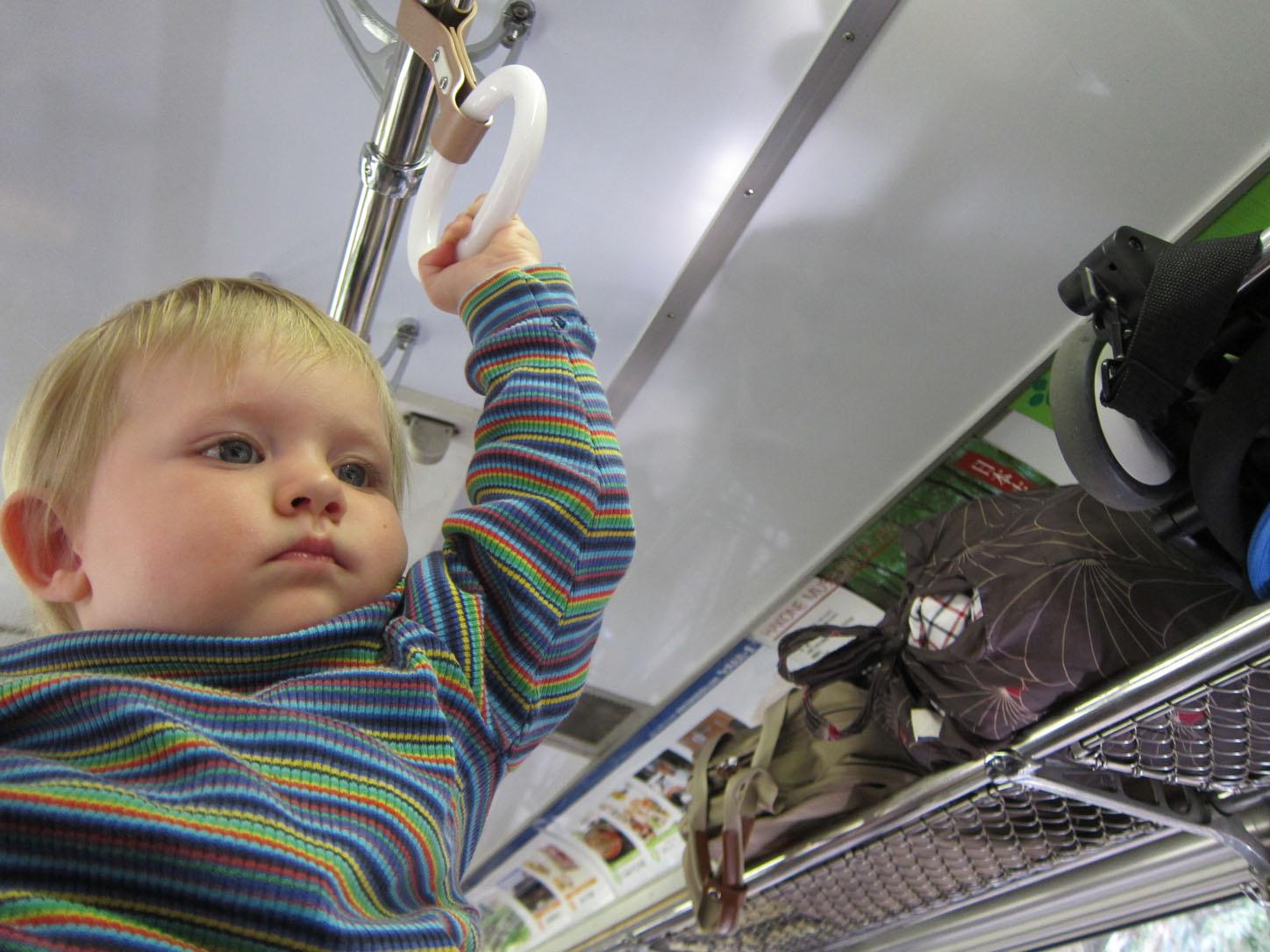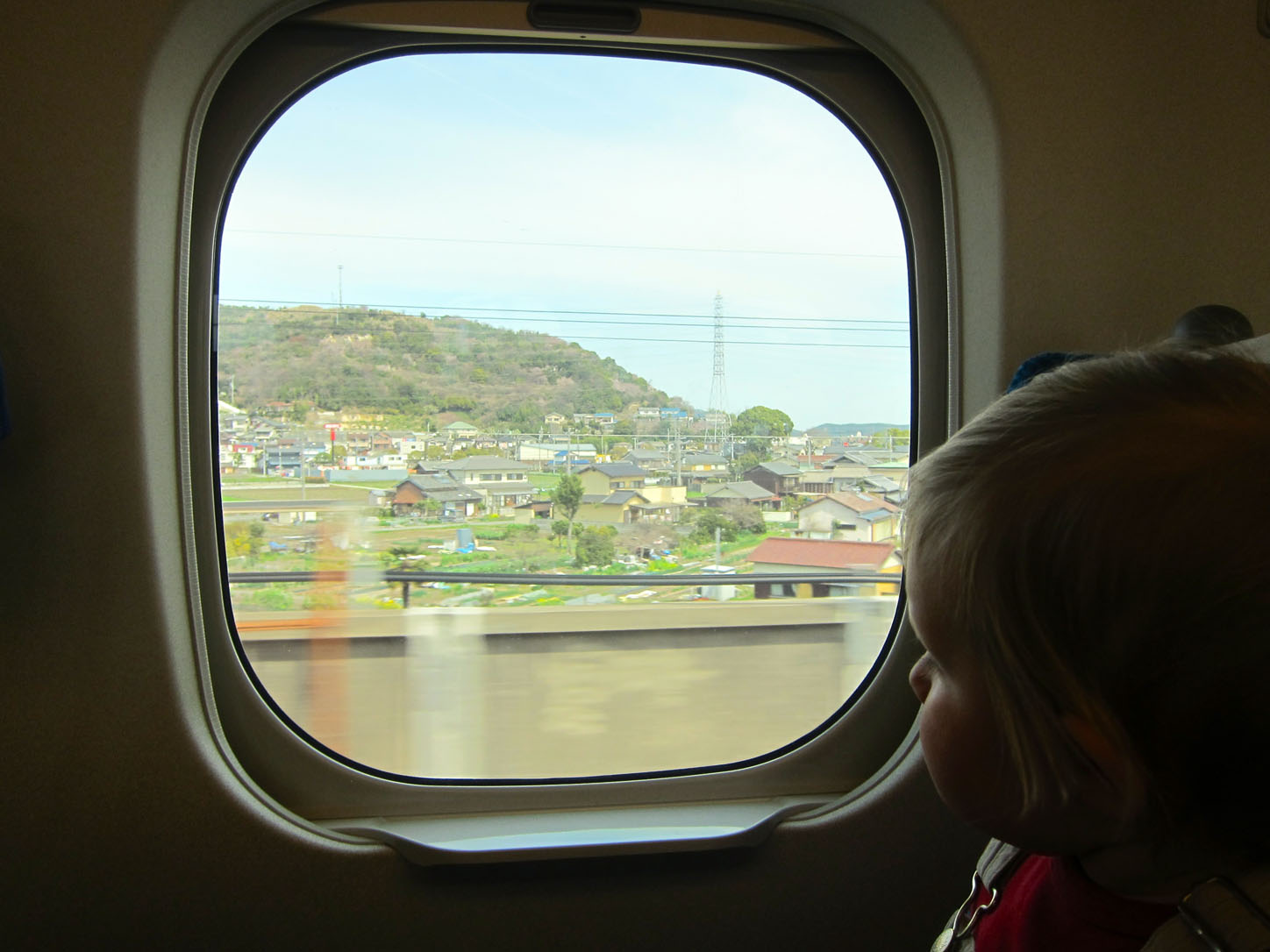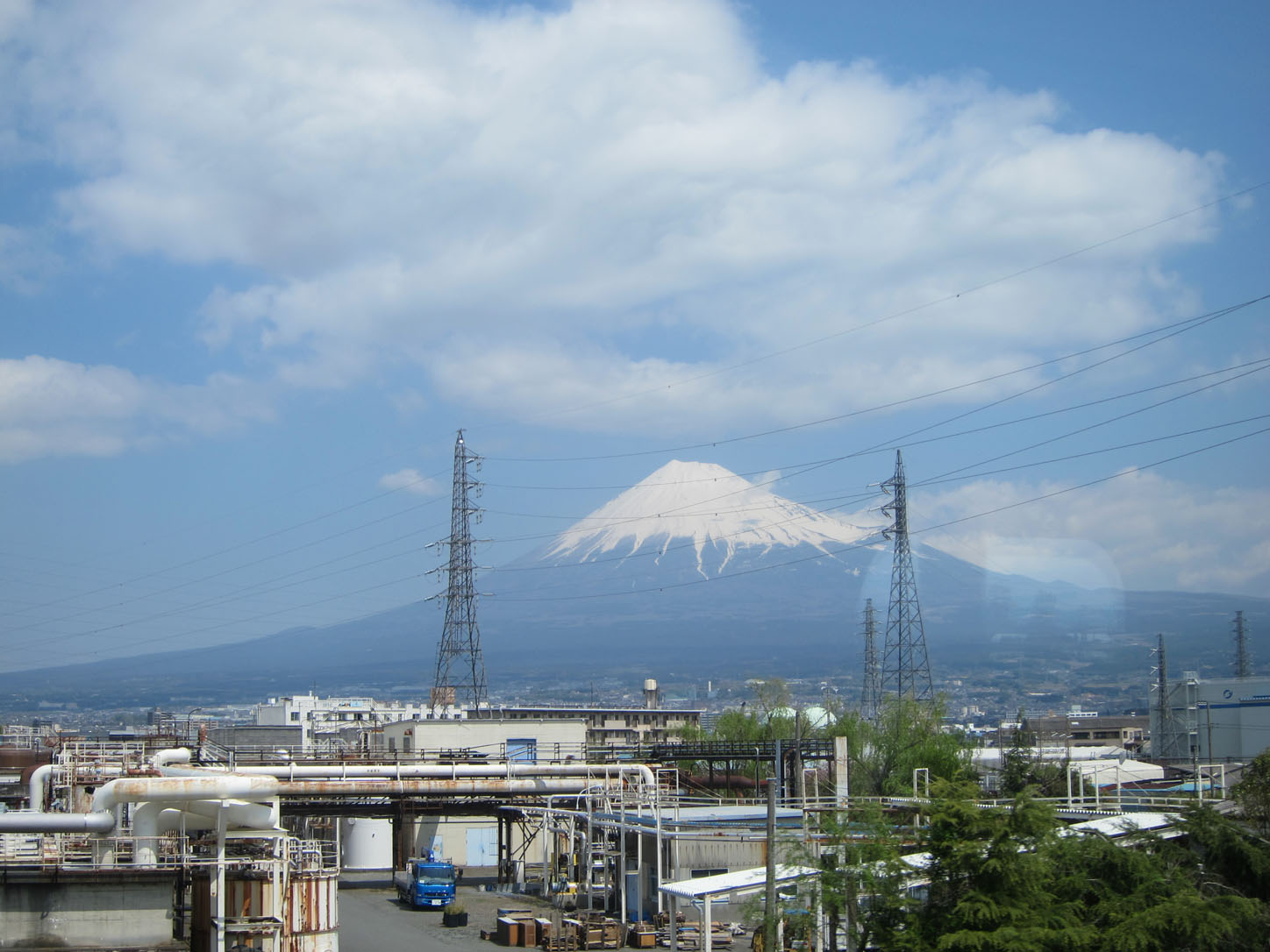
With the Japan Rail pass we’ve been taking advantage of riding the Shinkansen up and down Japan’s central trunk. Shinkansen actually means new trunk line instead of bullet train as I had assumed earlier. The Japan Rail company created this new elevated line in 1964 to operate fast speed trains between the big metropolitan centers of Japan. The train can reach 320 kilometers per hour but only in the more rural northern area which we did not get to visit. On the congested section that we traveled the train only reaches 230 km/h. Even at these low speeds it only takes 15 minutes between cities.

What truly impresses about the Shinkansen is not the speed but the frequency. They run 13 trains per hour in any one direction. That means only 3 minutes between trains. If that we’re not enough there are even faster trains, Nozomi, that make fewer stops and hence overtake trains parked at stations. With these many trains playing a giant game of leap frog it means that at a station where all trains stop you only have a few seconds to jump out and get in. There is only 3 minutes of headway between trains and the next train is approaching at 200 km/h. Should you be disembarking on a smaller station you have a comfortable 4 minutes to board as they wait to be overtaken by the Nozomi. The Swiss might be punctual but on the Shinkansen it’s a matter of life and death. (Also I’ve waited hours in Switzerland for a train going my way.) For this reason all the Shinkansen trains are coordinated from a single control centre in Tokyo.
Although you can ride standing and without reservations, we reserved seats on activating our Japan Rail Pass since they are free with the pass. The nice lady at the counter spent 30 minutes doing all our reservations that we had organized and printed out on a piece of paper, German style.

Riding the Shinkansen is also environmentally friendly. It creates only about 20% of the CO2 emissions as the same journey would by car. It consumes about one tenth the energy a plane needs to make the same journey. In fact the head of Japan Rail wants all regional flights canceled in favor of the Shinkansen to better meet the Kyoto environment accords. (But then he would want that, being the head of Japan Rail…)
The new 700 series has the ability to tilt on curves and hence does not need to break and accelerate, saving even more energy. Speaking of accelerating, the train is fully powered in each car and does not use the locomotive system used in Europe. This means it can accelerate and break much quicker than most trains. Given the high population density and frequency of stops, this highly contributes to the time savings.

Japan Rail is the most profitable train company in the world, making US$ 2.95 billion in profit last year. The good news is they are putting that money to work on a new version of the Shinkansen that will float on magnetic rails and go up to speeds of 500 km/h. But it won’t be finished for at least another 25 years. I shall have to come back then.
If you visit Japan, do get the rail pass as it offers incredible freedom to jump on the vast network and travel far each day. We have only used a quarter of what we could be doing with the pass as we stuck to central Japan and did not cross to the South shore, nor the North (as it would be called in England). There is also the pleasant view as you travel.

Here’s a small video so you can appreciate the length of the trains as well as the efficiency and speed of the leap frogging game.
